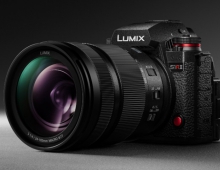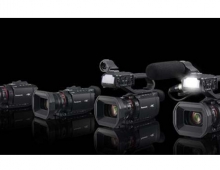
Matsushita Says PDP TV Sales Above Target
Matsushita Electric Industrial Co. said on Tuesday that global demand for plasma televisions and the profitability of the firm's plasma business were running above target.
Panasonic brand products maker Matsushita is the world's top seller of plasma
TVs, ahead of Samsung SDI Co. and LG Electronics Inc. of South Korea and
Japan's Pioneer Corp. in the fast-growing market.
Masaaki Fujita, head of Matsushita's plasma TV business expects the global market reach 6.0 million units in the year to March, one million above its prior forecast and more than double the 2.7 million units sold in 2004/05.
Fujita expressed confidence that Matsushita would be able to secure 35 percent of the global market. Based on the new forecast, Matsushita would sell 2.1 million plasma TVs in 2005/06, above its previous forecast of 1.75 million units.
Plasma is one of three technologies vying for share in the flat TV market. The other two are liquid crystal displays (LCD), which are primarily used for TVs under 40 inches, and rear-projection technology, best suited for TVs above 50 inches.
Matsushita also makes LCD TVs but says plasma is the best technology for flat sets above 37 inches because they can be produced more cheaply at the larger sizes and offer better image quality on several measures including a wider viewing angle, better reproduction of moving pictures, and a deeper black.
It faces a growing threat from Sharp Corp., which has recently introduced a series of LCD sets of 37 inches and above that are selling well, but so far Matsushita's strategy seems to be paying off.
Citing industry data, Fujita said Matsushita had 44 percent of the U.S. plasma TV market in June, helped by the introduction of new high-definition models. It has captured about 70 percent of the Japanese market, he said.
Fujita said profits in the plasma business, one of its key earnings drivers, were above its internal projections in April-June, although he did not give specific figures.
The bullish comments contrast with LG Electronics, which on Monday said its display business lost money in the latest quarter and Pioneer, whose plasma business has been mired in the red amid sluggish sales and low production yields.
Fujita said its production yields were above 90 percent and that it was more efficient than its rivals because it had achieved a vertically integrated business model, meaning it produces semiconductors and other key components in-house.
Matsushita plans to start operations at a new plasma display panel factory in September in Hyogo prefecture, western Japan.
The plant will have an initial output of 1.5 million panels per year, a calculation based on 42-inch panels. Output will be ramped up to 3 million units per year in late 2006, boosting the company's total output to 4.8 million units.
Between 85 and 90 percent of Matsushita's plasma panels are used in its own TV sets but the company hopes to use the new factory's output to raise the proportion of panels it sells to other companies over the medium-term, Fujita said.
Masaaki Fujita, head of Matsushita's plasma TV business expects the global market reach 6.0 million units in the year to March, one million above its prior forecast and more than double the 2.7 million units sold in 2004/05.
Fujita expressed confidence that Matsushita would be able to secure 35 percent of the global market. Based on the new forecast, Matsushita would sell 2.1 million plasma TVs in 2005/06, above its previous forecast of 1.75 million units.
Plasma is one of three technologies vying for share in the flat TV market. The other two are liquid crystal displays (LCD), which are primarily used for TVs under 40 inches, and rear-projection technology, best suited for TVs above 50 inches.
Matsushita also makes LCD TVs but says plasma is the best technology for flat sets above 37 inches because they can be produced more cheaply at the larger sizes and offer better image quality on several measures including a wider viewing angle, better reproduction of moving pictures, and a deeper black.
It faces a growing threat from Sharp Corp., which has recently introduced a series of LCD sets of 37 inches and above that are selling well, but so far Matsushita's strategy seems to be paying off.
Citing industry data, Fujita said Matsushita had 44 percent of the U.S. plasma TV market in June, helped by the introduction of new high-definition models. It has captured about 70 percent of the Japanese market, he said.
Fujita said profits in the plasma business, one of its key earnings drivers, were above its internal projections in April-June, although he did not give specific figures.
The bullish comments contrast with LG Electronics, which on Monday said its display business lost money in the latest quarter and Pioneer, whose plasma business has been mired in the red amid sluggish sales and low production yields.
Fujita said its production yields were above 90 percent and that it was more efficient than its rivals because it had achieved a vertically integrated business model, meaning it produces semiconductors and other key components in-house.
Matsushita plans to start operations at a new plasma display panel factory in September in Hyogo prefecture, western Japan.
The plant will have an initial output of 1.5 million panels per year, a calculation based on 42-inch panels. Output will be ramped up to 3 million units per year in late 2006, boosting the company's total output to 4.8 million units.
Between 85 and 90 percent of Matsushita's plasma panels are used in its own TV sets but the company hopes to use the new factory's output to raise the proportion of panels it sells to other companies over the medium-term, Fujita said.





















